How to take water meter readings: a detailed guide to reading and transmitting the meter readings
To account for the used water in apartments and private houses, special devices are installed. By transmitting the readings at a certain time, control over the consumed resource is made, and then its payment.
In this material, we will analyze in detail how to take the readings of the water meter, not to make mistakes in the calculations, and to transfer the data to the supplier company on time.
The content of the article:
Advantages of installing water meters
And to begin with, we’ll see if it makes sense to install metering devices - some tenants still pay utility bills at common rates.
If you installed the counters and doubt that you did it right, just compare your payments with the receipts of the neighbors who are still pulling with the installation. The amounts indicated in the payment column are the best argument in your favor. They are approximately 1.5-2 times lower than those declared by residents who have not yet installed water meters.
Also thinking about the acquisition and installation of metering devices? We recommend that you familiarize yourself with the procedure and meter installation rules.
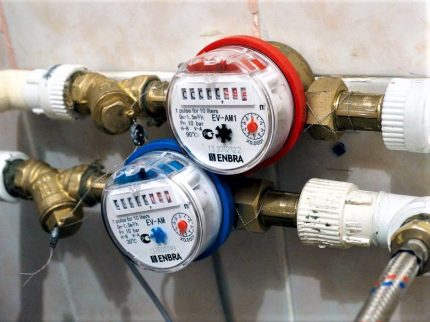
In the same receipts you can find the amount of resource consumed and wonder how much water we spend.
It is estimated that a monthly average resident of a comfortable city apartment performs the following actions:
- 118 times flush the toilet;
- 107 times uses a sink;
- Takes a shower 25 times;
- 4 times washed in the bathroom;
- Washes dishes 95 times.
As a result, he spends about 2-4 m³ of cold water and 1-3 m³ of hot water. Given that in families more often from 2 or more people, the amounts obtained are impressive. And this is - if you take readings from the meters, without them you have to give even more money.
If we analyze all the nuances of payment with and without devices, then we can conclude that the installation of water meters brings only pluses:
- can control spent cubic meters;
- easy to save family budget;
- no need to pay if you have been absent for a long time, as well as prove your absence;
- no need to pay the debts of irresponsible neighbors and pay interest for the increasing ratio.
And one more plus related to the protection of nature in general and the conservation of water resources in particular. Knowing your monthly expenses for water supply, you can learn to be more careful with water and gradually reduce consumption - within reasonable limits, of course.
How to take readings?
In order to pay regularly for the used water, it is necessary to perform a kind of “ritual” on a monthly basis, on the same dates, including the following:
- receipt of receipt;
- taking readings from metering devices;
- entering data into the receipt (when transferring information by phone or the Internet, this item is not needed);
- payment of the actually used amount.
Depending on who is involved in generating utility bills, there are various ways to transfer data. But first things first.
Analysis of the design of the water meter
To understand how to correctly take readings from the meter on the water, you need to understand its design, or rather, examine the scoreboard - the top panel, covered with transparent plastic.
The main element that you have to “work with" every month is a digital scale, the same as that of an electric meter. Almost all tachometric instruments are equipped with a roller scale - the most popular due to their simple design, accuracy and low cost.
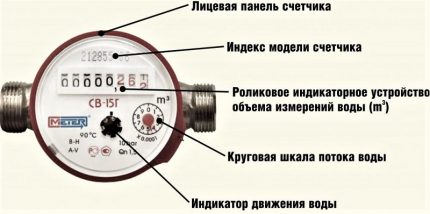
In addition to mechanical models, there are electronic ones in which the roller scale is replaced by a display. They are more expensive than conventional models, moreover, they are volatile - more often they work from a battery.
We talked more about the types of water meters and the rules for their selection in this article.
Before taking readings, you must accurately determine which meter is installed on the pipe with hot water, and which - with cold.
There are several ways to find out:
- use color coding - the case of counters for cold water is usually painted blue (like the edging of the board), for hot - in red;
- find lettering - domestic hot water / cold water or hot water / hot water;
- touch the pipe - the hot water main is always warm (except for periods of summer shutdown);
- open the tap and determine by the rotating indicator.
Traditionally, hot water pipes are laid from above, therefore, dhw meters are installed in the upper position. Unfortunately, not all plumbers comply with generally accepted requirements, therefore, using this method of determination, you can make a mistake.

For convenient reading, water meters must be installed in the field of visibility - in an open area of the water supply or under the cover of the plumbing hatch. Both devices should be turned to the light source with the front side.
What numbers matter for the calculation?
Having decided on the belonging of the devices to hot and cold water supply, it is necessary to write down the actual numbers - those that are indicated on the scale or display. And before that, you will have to figure out which numbers you need to read on both water meters, and which ones you don’t need to consider.
The scale of a simple tachometer instrument includes 8 rollers, that is, it shows 8 digits: the three rightmost ones indicate consumed liters, the rest - cubic meters.

However, there are counters whose scoreboard differs by the total number of digits or the number of digits after the decimal point. In this case, you need to consult a specialist installing the meters, or a representative of the service company making the seal.
Can I round off the readings? This is allowed, in the direction of increase or decrease. Usually, if the red numbers reach the value of "600", the number is increased by 1, that is, liters are rounded to the cube.
Reading example:
Suppose that the following number is on the dial of the HVS counter - 00076,268. We only write “76” to the receipt. Suppose that next month the testimony is 00084,896. We round and write in the column of the last month “76”, the current - “85”. The difference is 9 m³.
To understand how much you need to pay for the consumed water, we multiply the cubic meters spent by the regional tariff, suppose 34.5 rubles / m³. It turns out 310.50 rubles - so much will have to pay for cold water.

In more detail, we analyzed the specifics of calculating water flow in another our article. Having figured out what numbers to submit on the water meters, it remains to choose the most convenient transmission method, if there are several.
Methods and terms for transmitting evidence
Thanks to the development of communication networks, users are provided with many ways to transfer monthly water metering data.
All methods can conditionally be divided into 3 large categories:
- telephone message;
- transmission of evidence over the Internet;
- supply of data on paper - receipts.
But first you need to understand where to send the testimony: to the management company, housing department, the main entrance or directly to the branch of the supplier company. It is better to check this information with the representative of the service organization.

Popular ways to save time:
To transfer the meter readings in the above ways, it is not necessary to make calculations - usually it is only necessary to transfer the current readings, in some cases along with the data for the last month.
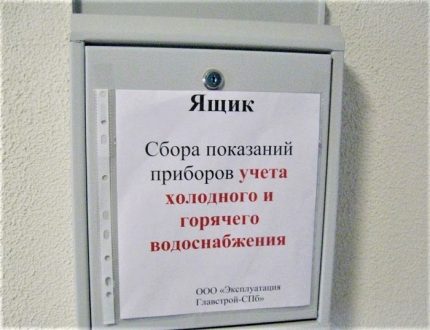
The most inconvenient way is to walk to the nearest Gorvodokanal branch.But older people often choose it, to once again go out and chat with people.
Dates of data transmission in different regions differ. Usually these are numbers from the 23rd to the 25th or 26th of each month. The exception is pre-holiday days, for example, before the New Year, the period can move from December 19 to December 22.
The recommended period for the transmission of testimony is indicated on receipts.
Recommendations for reducing water consumption
Utility payments significantly devastate the family budget, especially in the winter, when you also have to pay for heating. To reduce the amount, you can save on paying for water services, reducing water consumption, as well as reduce heat bills, setting the meter for heating. But how to reduce water consumption?
The numbers on the counter will be lower if you follow the following recommendations:
Buying drinking water, you will reduce the consumption of tap water by about 40-60 liters per month per person. True, it will not be possible to save on this, but health can be improved.
Do not lose sight of such “trifles” as lime or rust smudges in the toilet bowl or sink. They signal regular leaks.
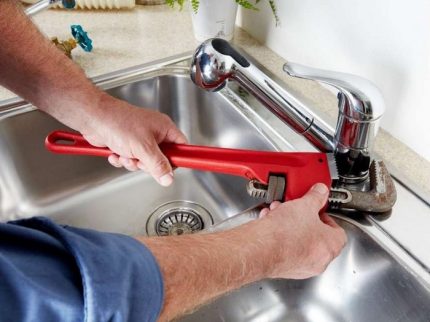
Even in a small apartment, at least 2 taps are installed, in the kitchen and in the bathroom, and a toilet. If they leak, then the monthly volume of wasted water will necessarily affect the payment for a communal apartment.
We looked at more ways to reduce water consumption in next article.
If there are still no water meters installed in the apartment, you are guaranteed to overpay. Fix this problem immediately! Step-by-step instruction on the installation of metering devices we brought here.
Conclusions and useful video on the topic
The user shares his personal experience:
Option to fill out a receipt:
Already there is experience in using “smart meters” - electronic devices that transmit readings directly to the user's phone or computer specialist from the service company.
Perhaps in the near future all homeowners will be relieved of the obligation to provide monthly water metering data, for which automatic devices will do this.
You still have questions about taking and transmitting readings of a meter for consumption of cold and hot water? Ask them under this article - other site visitors and our experts will try to clarify incomprehensible points to you.
If you have a smart meter installed that automatically transmits readings to a service company, please share your impressions of its use, add a photo of your device.

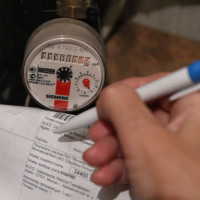 Water meter readings: an algorithm for taking readings and transmitting them to regulatory authorities
Water meter readings: an algorithm for taking readings and transmitting them to regulatory authorities 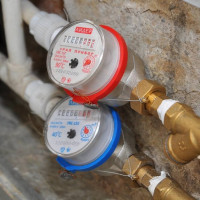 How to install water meters yourself: installation and connection diagram of a typical meter
How to install water meters yourself: installation and connection diagram of a typical meter 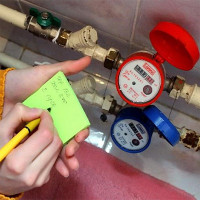 How to pay for water by the meter: specifics of calculating water consumption + analysis of payment methods
How to pay for water by the meter: specifics of calculating water consumption + analysis of payment methods 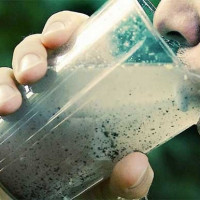 Rating of water filters for washing: rating of the best models and selection guide
Rating of water filters for washing: rating of the best models and selection guide 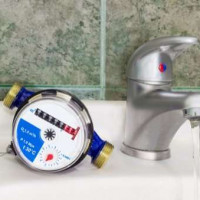 Verification period for cold and hot water meters: verification intervals and rules for their implementation
Verification period for cold and hot water meters: verification intervals and rules for their implementation 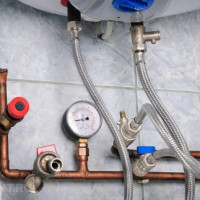 Types of water meters: overview of various types + recommendations for customers
Types of water meters: overview of various types + recommendations for customers  How much does it cost to connect gas to a private house: the price of organizing gas supply
How much does it cost to connect gas to a private house: the price of organizing gas supply  The best washing machines with dryer: model rating and customer tips
The best washing machines with dryer: model rating and customer tips  What is the color temperature of light and the nuances of choosing the temperature of the lamps to suit your needs
What is the color temperature of light and the nuances of choosing the temperature of the lamps to suit your needs  Replacement of a geyser in an apartment: replacement paperwork + basic norms and requirements
Replacement of a geyser in an apartment: replacement paperwork + basic norms and requirements
The most “expendable” device in terms of water is the toilet. A five-liter tank is emptied in the average family at least 10 times a day. So count. A tank with separate buttons for large and small flushing will help to save. It certainly costs more, but quickly pays off. Of course, this only matters to those who pay by the meter, and not by average rates.
Honestly, the assertion that water consumption by meters is always less than by standards, and, accordingly, it is more profitable to have meters, is very, very controversial. The only plus in the counters is that you always know for sure and you can control the amount of water consumed. She also noticed that a very large consumption of hot water is in those houses where it is actually warm, much lower than the temperatures specified for the domestic hot water in the technical regulations. Naturally, in such a house a hot faucet opens to a greater degree. Therefore, for those who are looking for ways to save water, I advise you to pay attention to the temperature of your hot water supply and “wrestle” with your UK if the degrees are below normal.
Payment by meters is more profitable in 99% of cases. In addition, there will always be a particularly cunning person who will be registered in the apartment alone and will pay according to the standards for one, and live almost a gypsy camp. Do you want to pay for these? Without meters, all unpaid expense would be shared between neighbors.
Here I agree with you, but partially.
Firstly, there are people in whose apartments one person is registered, but two, three or more live. There is nothing unusual here, no one bothers the landlord to report the fact that there are more tenants than prescribed, and pay honestly after that. The fact that few people do this is a moral issue, not a technical one.
Secondly, how does the lack of a meter impose obligations on other neighbors to pay unpaid water consumption? I don’t see the logic in this, to be honest: if you have a meter installed - you pay exclusively for the used water, what neighbors do there without a meter - it does not concern you. The same story, if no tenant has installed the meter, payment is carried out strictly at the rate, which is calculated by the number of registered people in the apartment.